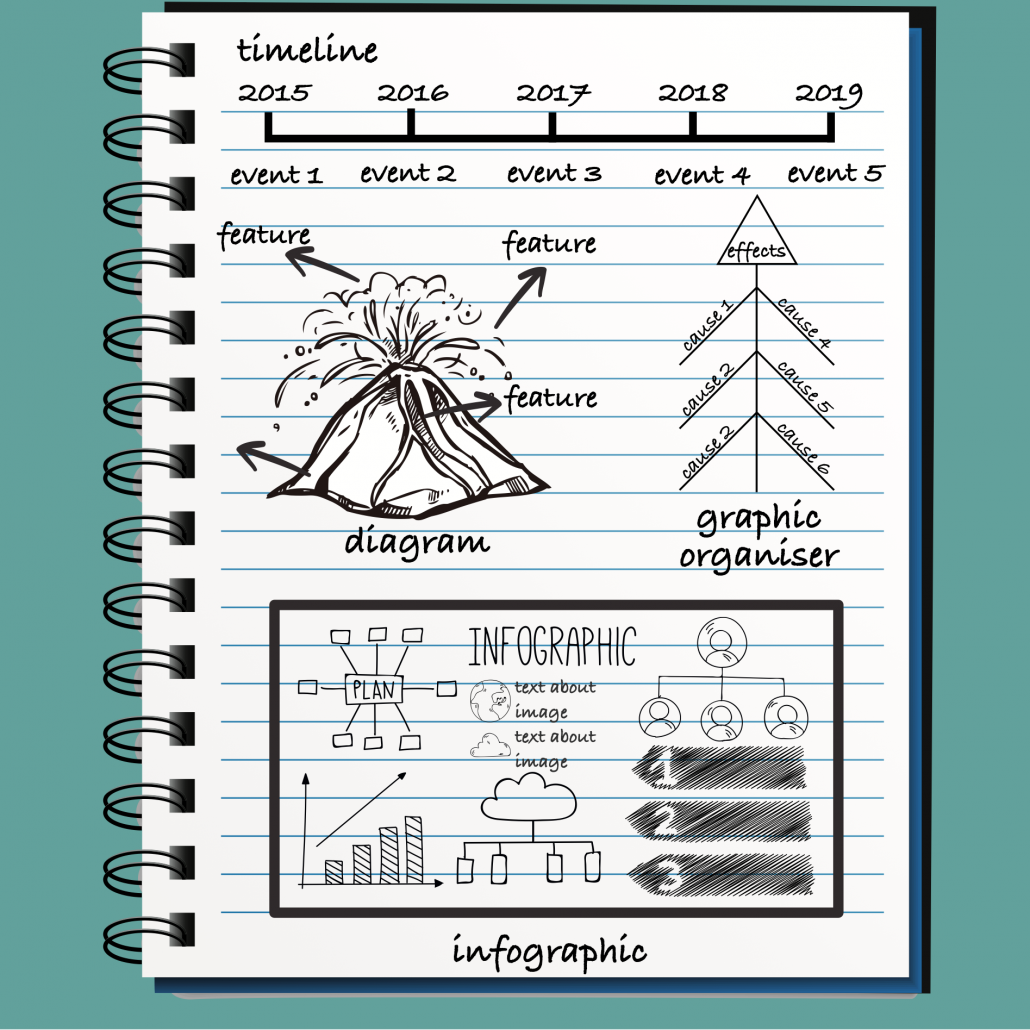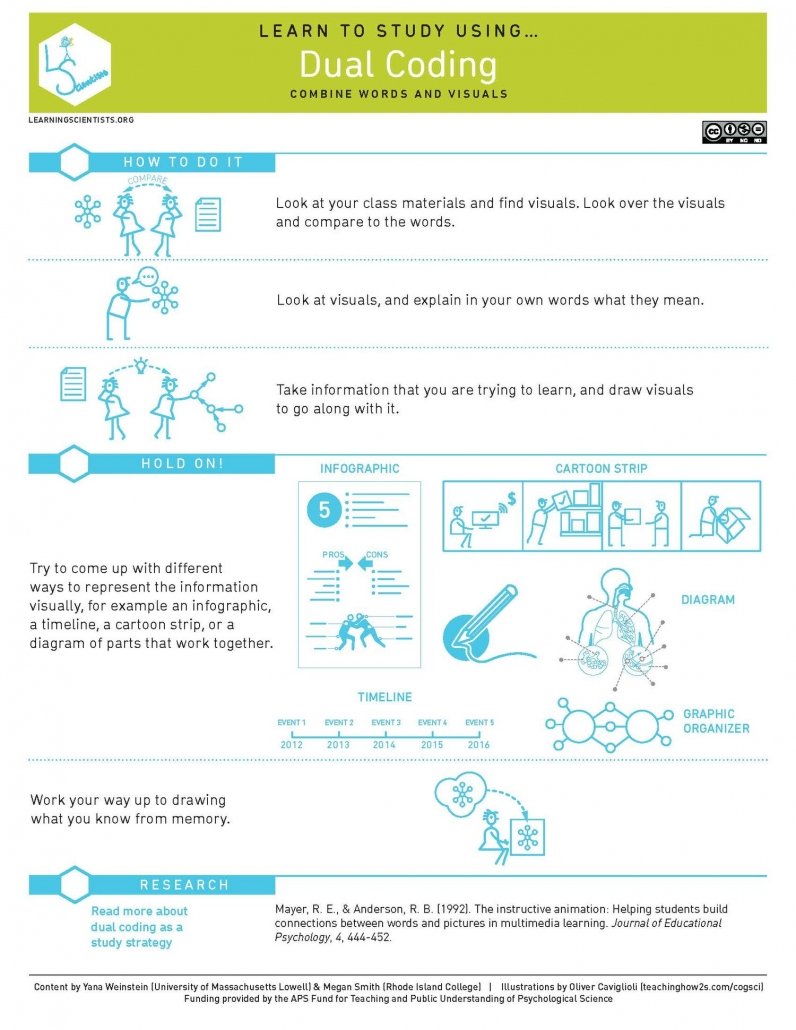Dual Coding
Combing images and text when studying
Dual coding sounds a bit complicated, however, it’s not. It simply involves combining text and images when you are studying. There are many ways you can present text and images, such as with infographics, timelines, cartoon strips, diagrams, and graphic organisers.
When you have information in two formats it gives you two ways of remembering information. For example, thinking about the images can help trigger your memory and help you recall the information.

Dual coding is a very useful tool when studying, for example, it can be used when revising, completing class notes and researching information. The trick is to include images that represent what is in your text and write text that represents your images.
Before you start dual coding, take a look at the excellent image below produced by the thelearningscientists.org. It provides some examples of different ways you can dual code. Choose a technique that you feel is appropriate for the information you are learning. Remember, combine text and images and make sure they are linked (the text says what is presented in the image, the image represents what is said in the text).

What should you do after you use dual coding?
After you have combined visuals and words describing the idea you are trying to learn, you then need to start retrieving the information from your memory on your own. To begin with, take a look at the information you have dual coded for a minute. Then put it to one side and record everything you can remember, you can use text and images for this. After a minute or two of intense writing/drawing, go back to your original information and read it again. Then, return to your new notes and add anything else you missed out.
Over time, you will get to the point where you will no longer need to go back to your own notes because you will remember the information. You should regularly revisit the information to build your memory.